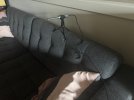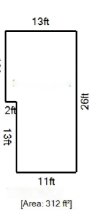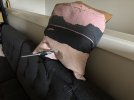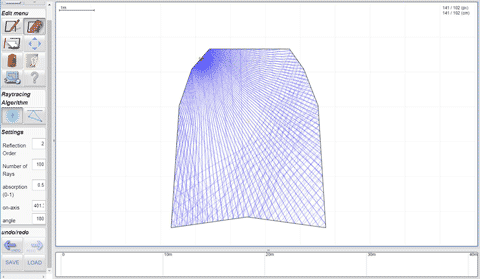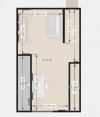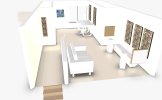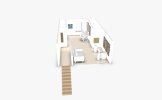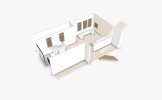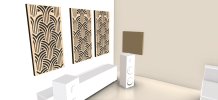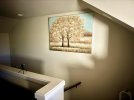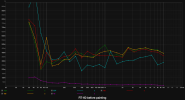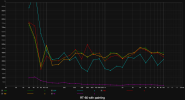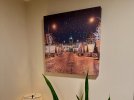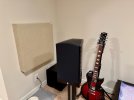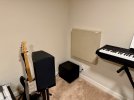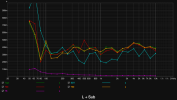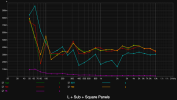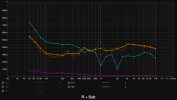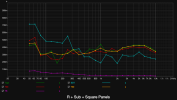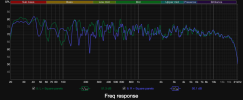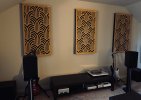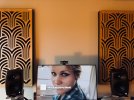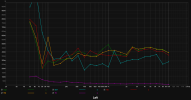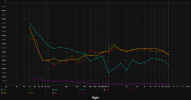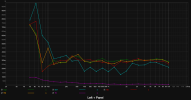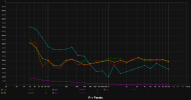iulianm
Member
My system is in the attic which has a weird shape and I finally decided to try to add something (that would also improve it's aspect) but I am unsure how much it would help with anything.
I have never been to a treated room to get to experience how it would be (basically I don't know what I'm missing).
Any suggestions on what I could improve either by shuffling stuff in the room, adding some treatment on the walls? I am bad with design but I do like a good one when I see it and would also want to improve the aspect of the room.
My gear is Revel M106 and 2 x SVS SB-1000 and near the window I have the desktop speakers (Audioengine A5 with a sub as well that I actually quite a lot (and thinking to upgrade as well)).
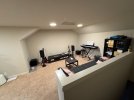
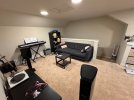
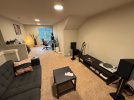
I do have the Umik-1, measured with REW each speakers individually (with and without sub) and average is bellow:
With and without sub some measurements looks like this:
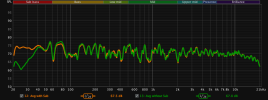
RT60 from REW looks like this (L and R speakers with sub on):
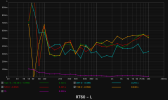
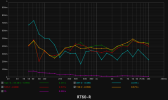
Attached as well the mdat file from REW.
I have never been to a treated room to get to experience how it would be (basically I don't know what I'm missing).
Any suggestions on what I could improve either by shuffling stuff in the room, adding some treatment on the walls? I am bad with design but I do like a good one when I see it and would also want to improve the aspect of the room.
My gear is Revel M106 and 2 x SVS SB-1000 and near the window I have the desktop speakers (Audioengine A5 with a sub as well that I actually quite a lot (and thinking to upgrade as well)).



I do have the Umik-1, measured with REW each speakers individually (with and without sub) and average is bellow:
With and without sub some measurements looks like this:

RT60 from REW looks like this (L and R speakers with sub on):


Attached as well the mdat file from REW.
Attachments
Last edited:
